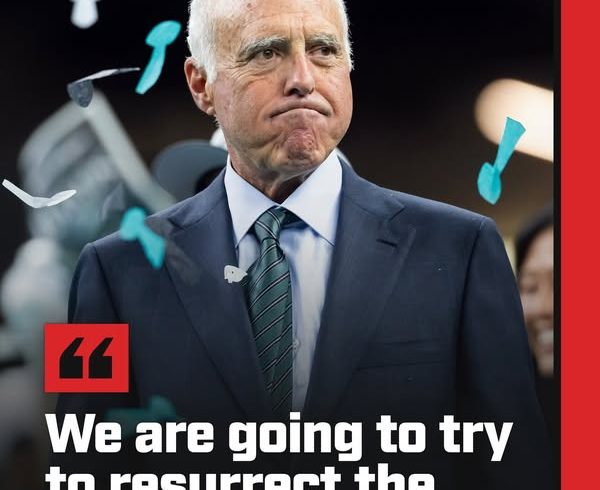We are going to try to resurrect the fullback position Eagle owner Jeffrey Lurie vie 94WIP
The National Football League has seen its fair share of trends and evolutions, but few positions have experienced as steep a decline as the fullback. Once a cornerstone of offensive schemes, the fullback has largely become an afterthought in the modern era of pass-heavy offenses. However, Philadelphia Eagles owner Jeffrey Lurie recently shared with 94WIP that the team is exploring ways to revive the fullback position—a move that could signal a broader shift in NFL strategy.
A Brief History of the Fullback
In the NFL’s earlier decades, the fullback was an indispensable weapon. Players like Jim Brown, Larry Csonka, and Mike Alstott carved out Hall of Fame careers as bruising runners and blockers. The position was synonymous with grit, toughness, and versatility, serving as both a lead blocker and a secondary rushing option.
But as offenses evolved, prioritizing speed, spacing, and the aerial attack, the role of the fullback diminished. By the 2010s, many teams had entirely eliminated the position from their rosters, favoring hybrid tight ends or additional wide receivers instead. The shift was driven by analytics that emphasized the efficiency of passing plays and the growing importance of stretching defenses horizontally and vertically.
The Eagles’ Vision for a Fullback Renaissance
Jeffrey Lurie’s comments on 94WIP suggest a deliberate and thoughtful approach to reintroducing the fullback into the Eagles’ system. Rather than viewing the position through a nostalgic lens, the team aims to innovate and adapt the fullback’s role to modern NFL offenses.
“We’re not just bringing back the fullback for the sake of tradition,” Lurie explained. “We see an opportunity to exploit defensive schemes that are increasingly designed to counter spread offenses. A versatile fullback can be a matchup nightmare.”
The Eagles’ coaching staff, led by Nick Sirianni, is reportedly experimenting with formations and play designs that leverage the fullback’s unique skill set. This could include:
Enhanced Blocking Schemes: Utilizing a fullback as a lead blocker in power-run concepts, creating additional lanes for explosive plays.
Short-Yardage Dominance: Employing the fullback as a battering ram in goal-line and third-and-short situations.
Pass-Catching Threats: Designing routes for the fullback to exploit mismatches against linebackers or safeties.
Deceptive Play-Action: Using the fullback to sell run fakes while opening up opportunities for downfield passing.
The Strategic Implications
Reviving the fullback position is more than just a tactical adjustment; it’s a philosophical shift that could ripple across the league. NFL defenses have spent years optimizing to stop spread offenses, often deploying smaller, faster linebackers and defensive backs. A team effectively utilizing a fullback could force defenses to adjust, potentially reintroducing heavier personnel and creating new vulnerabilities.
Additionally, a fullback renaissance could open doors for a new generation of players with the size, strength, and agility to excel in the role. College programs might respond by placing greater emphasis on developing fullbacks, adding depth to a position that has largely been overlooked in recent drafts.
The Challenges Ahead
While the potential rewards are enticing, the Eagles’ experiment is not without risks. The modern NFL values efficiency, and dedicating a roster spot to a fullback must be justified through measurable impact. Critics may question whether the resources spent on reintroducing the position could be better allocated elsewhere.
Moreover, implementing this shift requires not just innovative coaching but also buy-in from players. The fullback role demands a rare combination of physicality, versatility, and selflessness, traits that may take time to find and cultivate.
A Glimpse into the Future
Jeffrey Lurie’s vision of resurrecting the fullback position is ambitious, but it’s also emblematic of the Eagles’ broader identity as a forward-thinking organization. If successful, this experiment could redefine the way teams approach offensive strategy in the NFL. More importantly, it could restore a beloved position to its rightful place in the sport’s landscape—bridging the gap between football’s storied past and its ever-evolving future.
For fans of the game, the prospect of a fullback resurgence is as exciting as it is nostalgic. It’s a reminder that even in a league driven by innovation, there’s always room to honor the fundamentals that make football great

